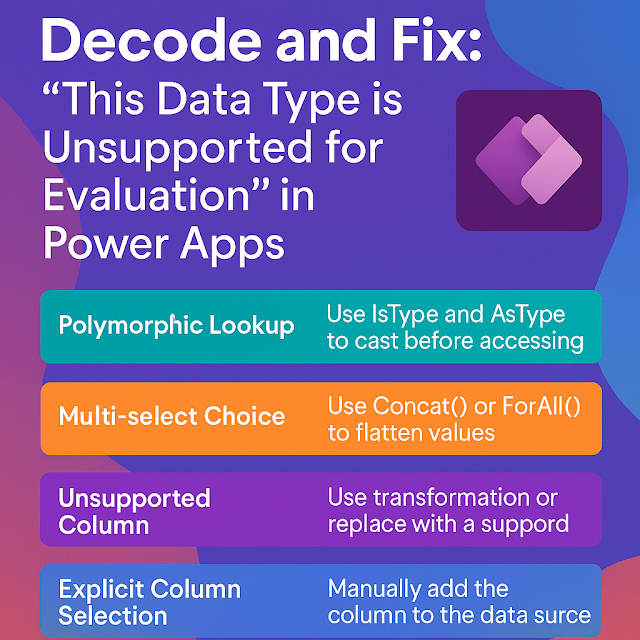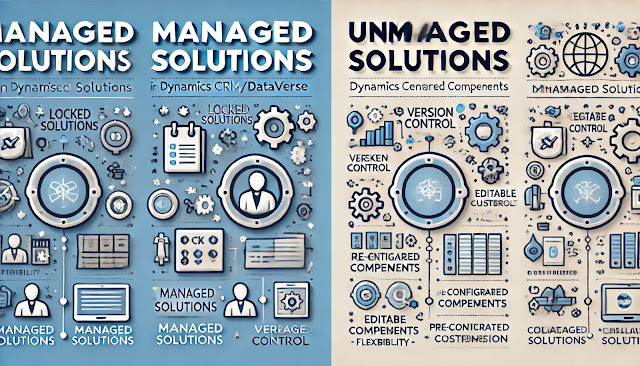Dynamics 365 Field Service : Configure 3D asset models
Imagine a field technician arriving at a complex site—say a wind turbine or an industrial HVAC system. Wouldn’t it be more efficient if they could visualize the asset in 3D, see how parts are connected, identify components, and even simulate a repair before physically touching the asset?
That's exactly what 3D asset modeling in Dynamics 365 Field Service offers.
With this feature, organizations can enhance remote support, field technician productivity, training, and maintenance planning using interactive 3D models linked to real-world assets.
What Are 3D Asset Models?
In Dynamics 365 Field Service, a 3D asset model is a digital twin—a virtual, interactive representation of a physical asset. These models:
- Provide contextual visualization of machines or infrastructure.
- Allow technicians to click on parts, view maintenance logs, and trigger workflows directly from the model.
- Enable remote assistance and guided work instructions.
Prerequisites
Before configuring 3D models, ensure:
- You have access to Dynamics 365 Field Service.
- Microsoft Dynamics 365 Remote Assist or Guides is optionally available.
- The Mixed Reality (MR) solution is installed from AppSource.
- Your 3D model is in GLB (GL Transmission Format Binary) format.
Step-by-Step: How to Configure 3D Asset Models
Step 1: Install the Mixed Reality Solution
1. Go to Power Platform Admin Center.
2. Choose the environment.
3. Open Dynamics 365 Apps.
4. Install Dynamics 365 Remote Assist Integration or Dynamics 365 Guides.
This solution includes entities and features required for 3D visualization.
Step 2: Upload the 3D Model
1. Go to Make.PowerApps.com.
2. Navigate to Assets > 3D Models.
3. Select New.
4. Upload your .glb file.
5. Fill out metadata (Model Name, Description, Version).
⚠️ Note: Ensure your GLB model is optimized (under 50 MB for web performance).
Step 3: Link 3D Models to Customer Assets
After uploading the model:
1. Go to Customer Assets in Dynamics 365 Field Service.
2. Open or create an asset record (e.g., Generator, HVAC).
3. Set the 3D Model field to reference your uploaded model.
4. Optionally configure:
- Model Anchors: Identify parts inside the model (e.g., "Fuel Pump").
- Hotspots: Define clickable zones that trigger actions (open a form, show a checklist).
Step 4: Test and View the Model
1. Go to the Field Service mobile app or HoloLens.
2. Open a work order or asset tied to the model.
3. Click View 3D Model.
4. Interact:
- Rotate/Zoom/Pan.
- Click on components.
- View component info or trigger inspections/workflows.
Bonus: Automate with Power Automate
You can also trigger workflows from model interactions. For example:
When a technician clicks on a “Replace Filter” hotspot:
- Start a Power Automate flow to create a part order.
- Update the service task status.
Best Practices
- Keep models lightweight and optimized for mobile.
- Use meaningful anchors and naming conventions.
- Test extensively on real devices (phones, tablets, HoloLens).
- Use security roles to control who can upload or modify 3D models.
Final Thoughts
By integrating 3D models with Dynamics 365 Field Service, companies can modernize how field service is delivered—reducing downtime, enhancing training, and improving first-time fix rates.
In the era of digital transformation, 3D asset modeling bridges the physical and digital worlds, empowering technicians to be smarter, faster, and more accurate in the field.












Comments
Post a Comment